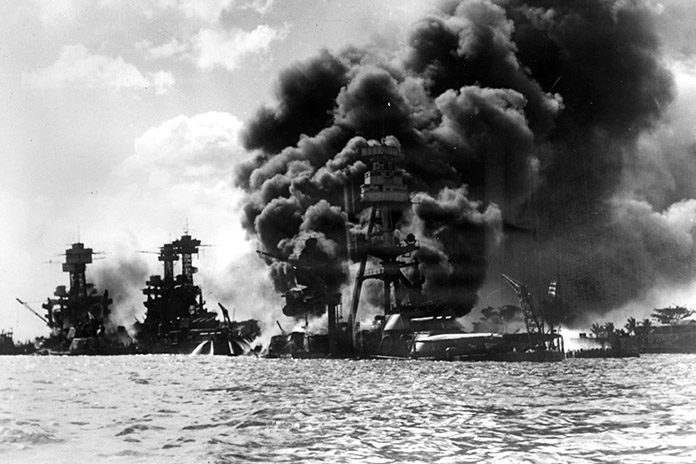
Tomorrow, Friday, Dec. 7, marks the 77th anniversary of the attack on Pearl Harbor, the catastrophic event that launched the United States in the World War II.
Pearl Harbor is a U.S. naval base near Honolulu, Hawaii and is located near the center of the Pacific Ocean, roughly 2,000 miles from the U.S. mainland and about 4,000 miles from Japan.
Just before 8 a.m. on Sunday, Dec. 7, 1941, Japanese fighter planes descended on the base and damaged or destroyed nearly 20 American naval vessels, including eight battleships, and over 300 airplanes. The attack left more than 2,400 Americans dead, including civilians, and another 1,000 people were wounded.
The next day, President Franklin D. Roosevelt asked Congress to declare war on Japan.
The attack on Pearl Harbor was a surprise, but Japan and the United States had been hostile toward one another for decades.
The United States viewed Japan has having a belligerent attitude toward China and in 1937, Japan declared war on China.
The United States responded by imposing a battery of economic sanctions and trade embargoes on Japan, but with little effect. Negotiations between the U.S. and Japan went nowhere and many believed that war was inevitable.
U.S. military leaders were not expecting an attack so close to home. As a result, the naval facilities at Pearl Harbor were relatively undefended. Almost the entire Pacific Fleet was moored around Ford Island in the harbor, and hundreds of airplanes were squeezed onto adjacent airfields.
A perfect target for the Japanese.
The Japanese believed that by wiping out the U.S. fleet at Pearl Harbor, the United States would be crippled militarily and unable to fight back against the Japanese aggression.
However, the 1940s, battleships were no longer the most important naval vessel – aircraft carriers were, and as it happened, all of the Pacific Fleet’s carriers were away from the base on Dec. 7.
Just as importantly, the attack left the base’s vital onshore facilities such as oil storage depots, repair shops, shipyards and submarine docks intact. As a result, the U.S. Navy was able to rebound relatively quickly from the attack.
The next day, Roosevelt delivered his famous line before Congress: “Yesterday, December 7, 1941 – a date which will live in infamy – the United States of America was suddenly and deliberately attacked by naval and air forces of the Empire of Japan.”
The president asked for and received the OK from Congress to go to war against the Japanese.
There was one single vote against going to war against Japan. It came from U.S. Rep. Jeannette Rankin of Montana. Rankin was a pacifist who had also voted against the American entrance into World War I. “As a woman,” she said, “I can’t go to war, and I refuse to send anyone else.”
Three days after Congress approved FDR’s declaration of war against Japan, Italy and Germany – allies of Japan – declared war on the U.S., launching America into its four-year involvement in World War II.
Editor’s note: Information for the article comes from the History Channel website.









